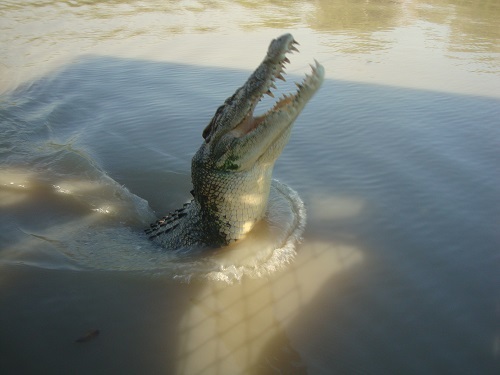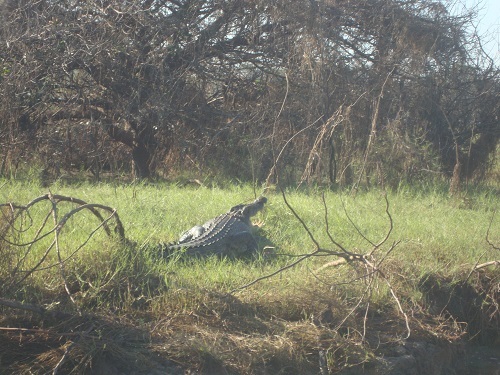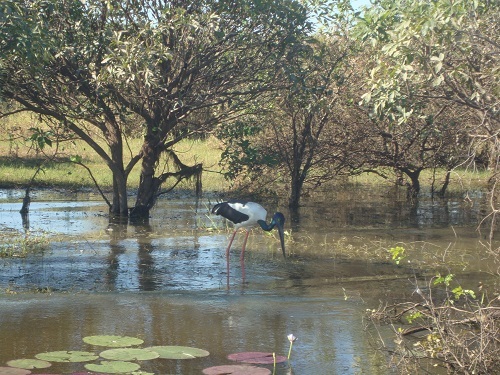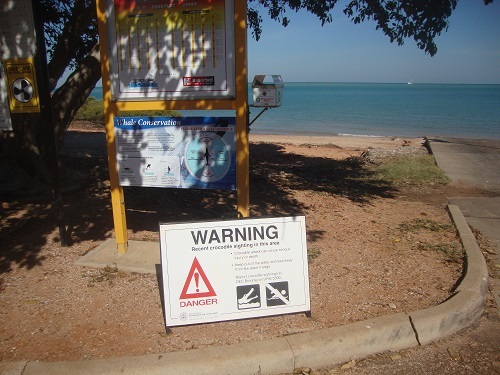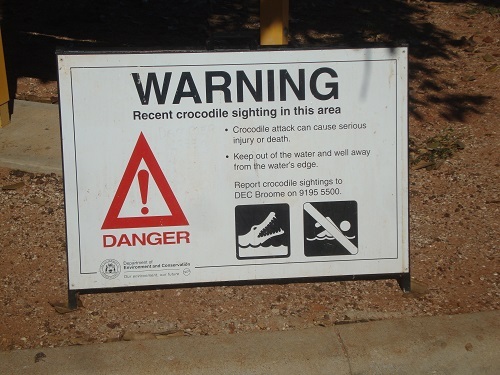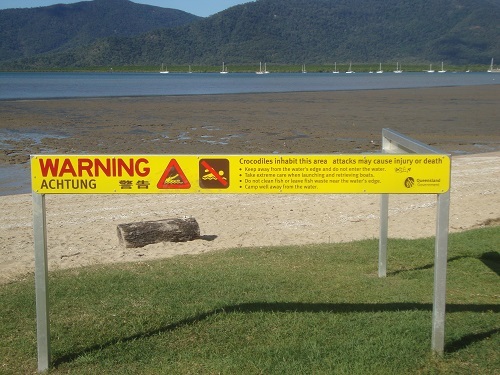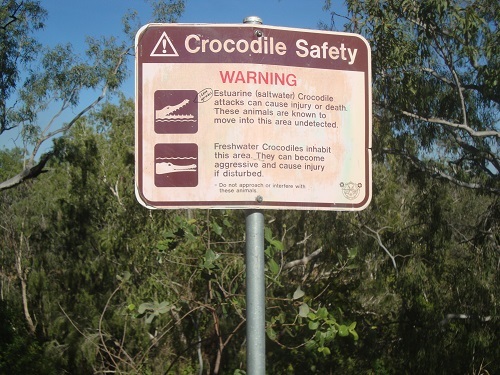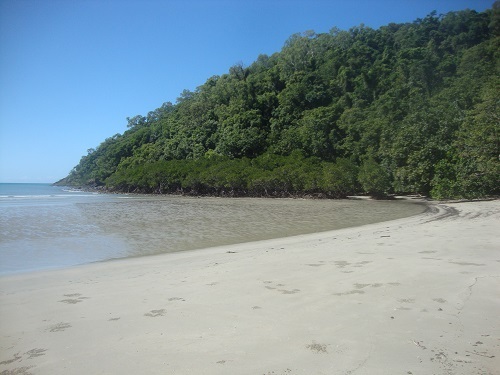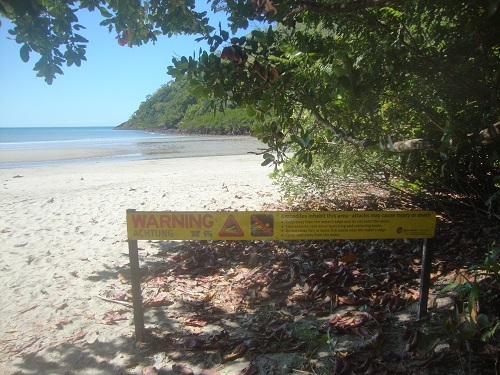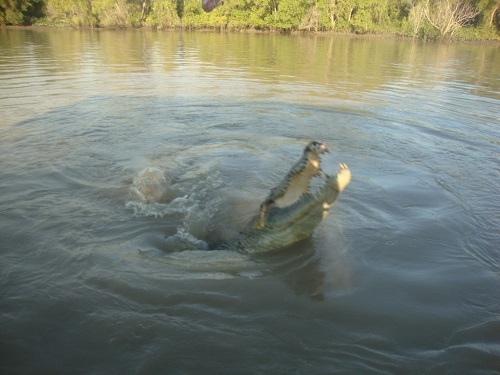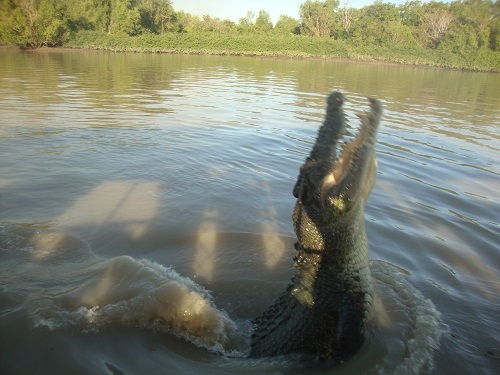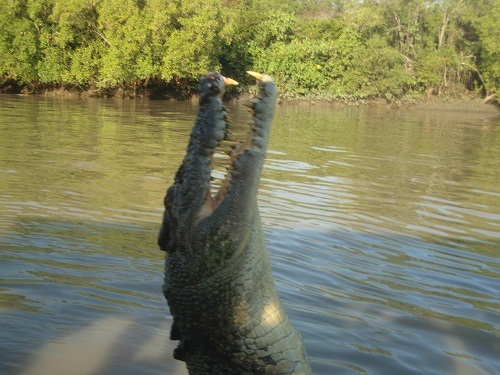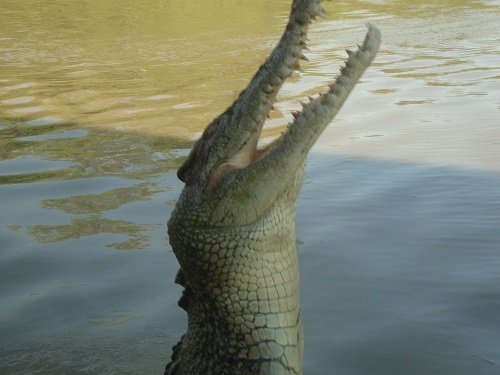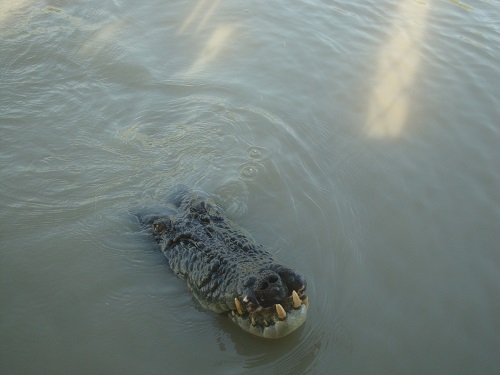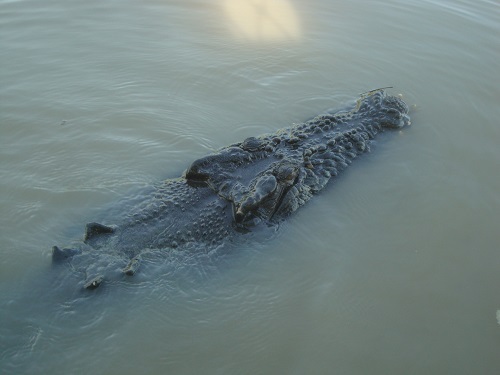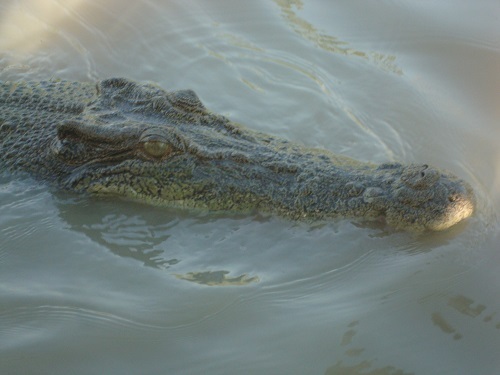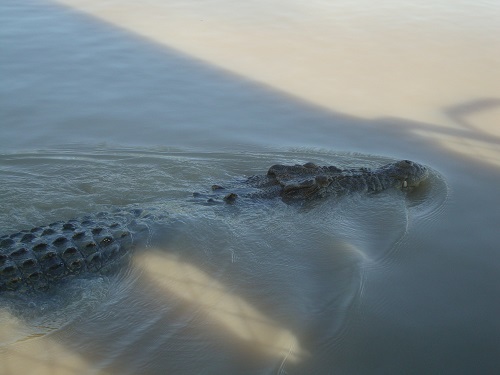Today, class, we will talk about the more mandibulary-endowed among our fellow animals, those whose teeth are so sharp, numerous or easily and endlessly reborn, and whose jaws pack so much enormous pressure that you certainly don't want to let your arm or leg, let alone your head, get anywhere near their alluringly say-cheese grins.
We will confine ourselves to land animals and amphibians, so that gets rid of the numerous classes of sharks - who are in a class of their own.
Where better to start than with Crocodylus Porosus.
Or for those unfamiliar with Church Latin, the Australian saltwater or estuarine crocodile, commonly known to their fellow Aussies as salties. These are massive creatures, the largest of all crocodilians, and according to many the animal most likely to eat humans.
Males regularly reach a length of 17 feet and a weight of half a U.S. ton, though you may easily come across a 1.1-ton big guy up to 23 feet long. They have 64 to 68 ready-to-eat-you teeth in their jaws, and thousands of back-ups sitting beneath the visible ones, ready to replace any that might fall out in battle. They can go through 3,000 teeth in a lifetime, even 8,000 according to some.
Their jaws can apply 5,000 pounds of pressure per square inch, that's 50 times that of a human's jaws. And don't take those tears for sympathy. They do have lachrymal glands secreting fluid behind a third eyelid, but given the creature's temperament, those people way back in the in the 16th century were right to coin the phrase 'crocodile tears.'
So all in all, you don't want to play a game of chicken with them.
Now for a visit. You'll find them all over the northern coastal regions of Australia, as well in freshwater areas of eastern India and Southeast Asia.
On Corroboree billabong (oxbow lake) east of Darwin, Australia, a large saltie basks on the bank as a jabiru, a black and white stork with very long red legs and an equally very long iridescent blue neck, prances around - cannily just out of line of the croc's 270-degree line of vision. For the first 100 or 200 yards the croc can run faster than a race horse.
We haven't come here just for the billabong, though. We're on a three-day trip to the famed Kakadu National Park with its majestic scenery, wildlife, and Aboriginals' rock paintings. Croc warning signs are everywhere, as throughout northern Australia, from Broome on the west coast to Cairns in the east.
And from inland Edith Falls in the Northern Territory, where flooding brings them into fresh water, to remote Wirrwawuy Beach - try that for a tongue twister - in the Aboriginal reserve of East Arnhem Land.
We're seated round a camp fire in the blackest of nights, enjoying the tea and stronger stuff after an energetic day's hiking in Kakadu, when our guide chooses just this moment to regale us with the story of the German lady who survived the 2002 terrorist bombing in Bali, only to become a saltie's supper not far from where we're presently squatting.
Her guide told the group it was perfectly safe to swim in a pool at night. And off they toddled. Suddenly she was nowhere to be seen. Apparently the massive beast went for her and not the others because she alone had not drunk any beer. Hence her heart pumped faster while the others were more relaxed, drawing the keen-eared croc to zero in on her.
The two-fold moral: drink bear and never trust your guide.
Lovely beach
But...
Our guide now takes us down to the creek with torches to hunt for venomous snakes in the dark - and Yours Truly is the only one who hasn't drunk any beer, and why the frigging hell am I trusting my frigging guide?
On the Adelaide River, south of Darwin, you can rendez-vous with jumping salties, while listening on the way in the tourist van to such Aussie golden oldies as 'Tie me kangaroo down, sport,' 'Take me koala back, Jack' and 'The pub with no beer.'
We board a little motor boat. There are huge male crocs everywhere. Patrick, the guide, seems to know them all personally. This is because they are very territorial and keep to the 50 yards width of the territory they've staked out along the river. See, that's Henry over there. Hi, Hank!
Patrick dangles pieces of meat over the side on a string at the end of a rod, enticing them to come over and jump for it, which they do. And by the way, there are no life vests on board. They'd be totally useless, anyway, he says. A croc would snap you up in nano-seconds if you fell in.
Crocs have staked out the whole course of the river, basking on the banks or lurking on the bottom. Fang approaches. He's called Fang because he lost the tip of his snout in battle with another croc. Two massive front teeth now stick nakedly up into the air. He jumps several times.
Fang
That whitish blob on the water over there is Michael Jackson. He's called Michael Jackson because he's an albino. He has a very white face and snout instead of the usual grey, and a black body. There is only about one albino croc in every 10,000, and only one in every 10,000 of those will reach the 18-foot length of Michael Jackson.
So did you know that Michael Jackson, then, is a one in 100 million rarity? No, I didn't. And did you now that a saltie can detect a dog lapping water in the river two miles or more away? No, I didn't.
[Upcoming blog next Sunday: Animal Planet on the Looney Front - Jaws, section 2, Komodo Dragons]
______________
By the same author: Bussing The Amazon: On The Road With The Accidental Journalist, available with free excerpts on Kindle and in print version on Amazon.
